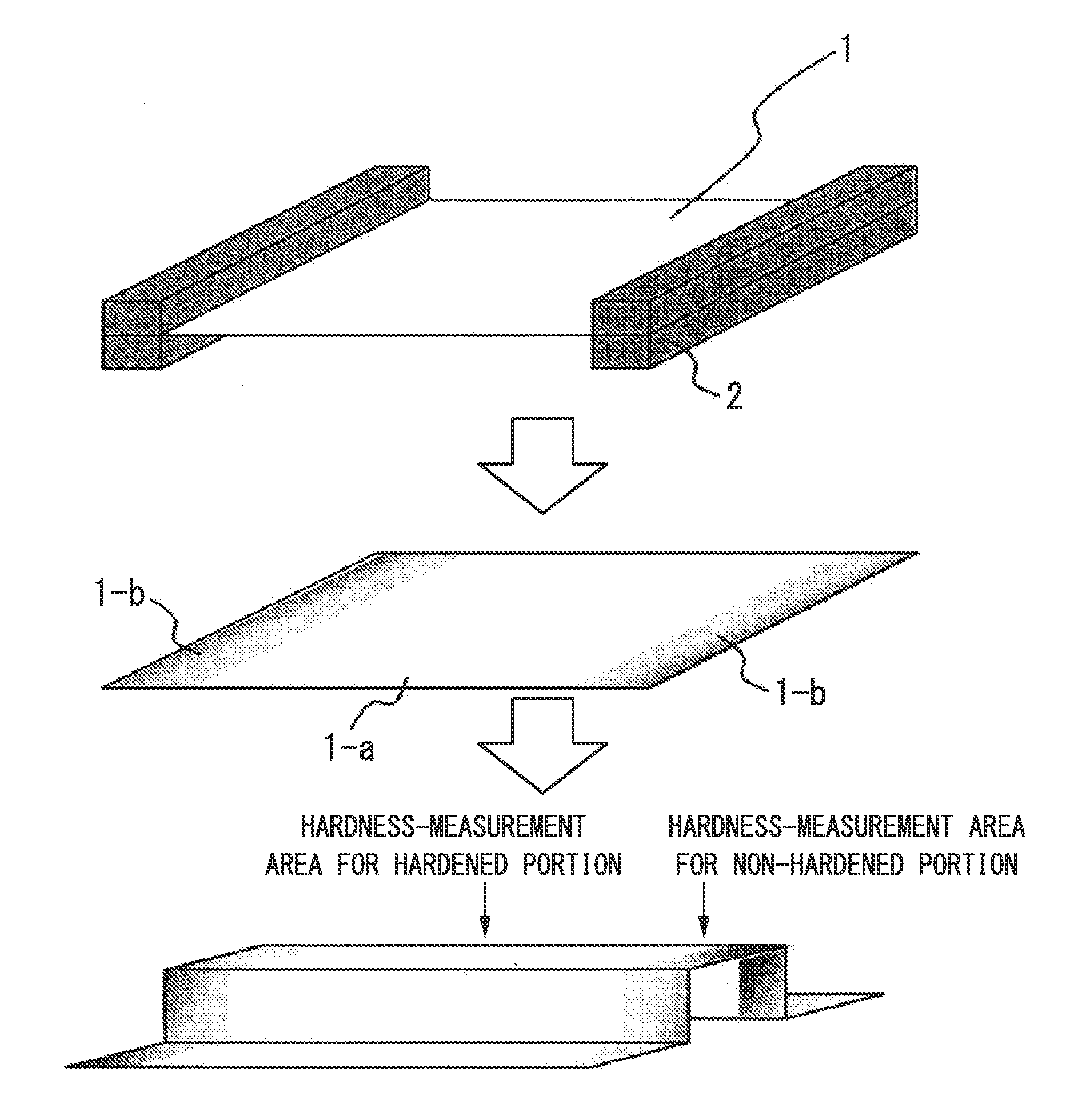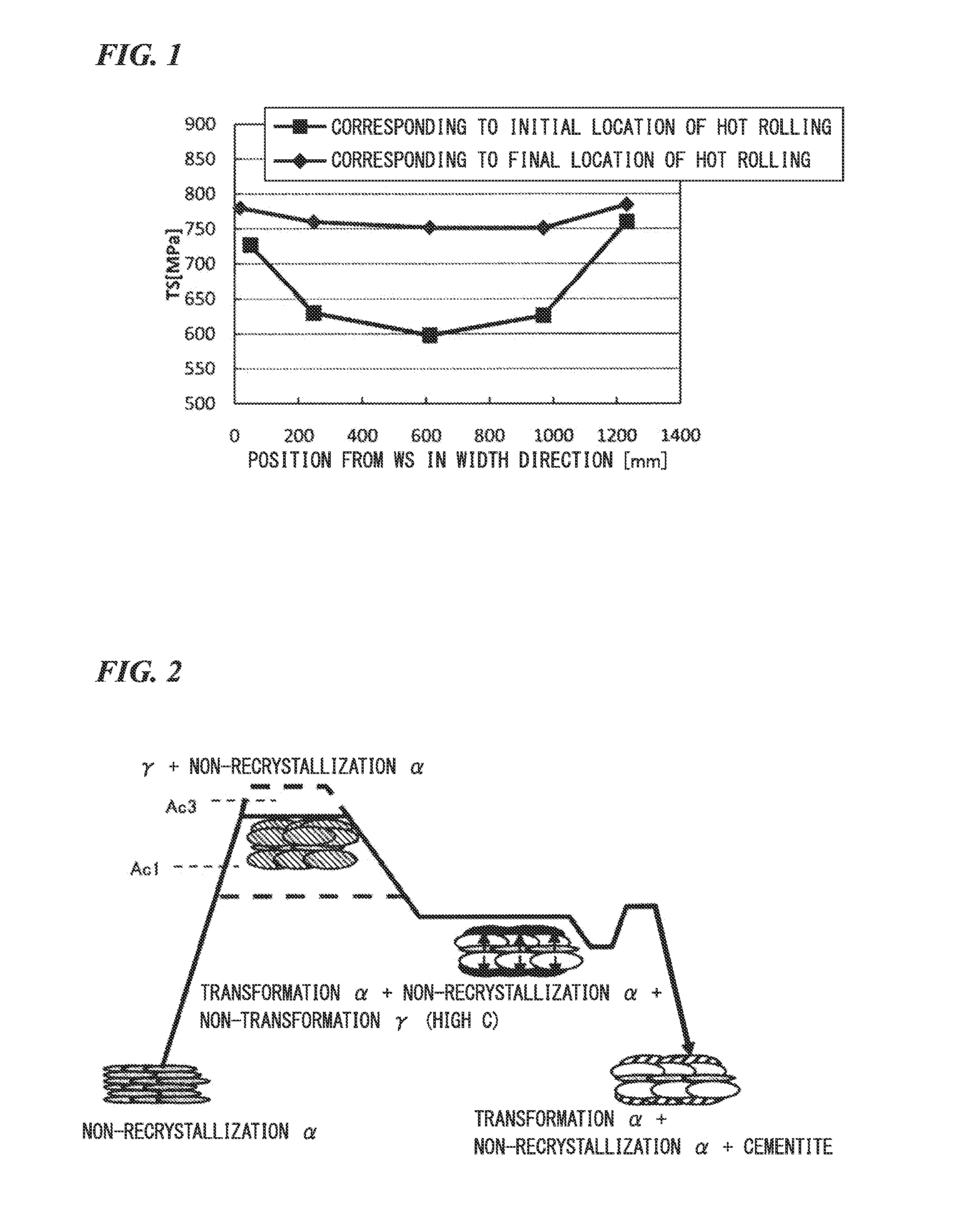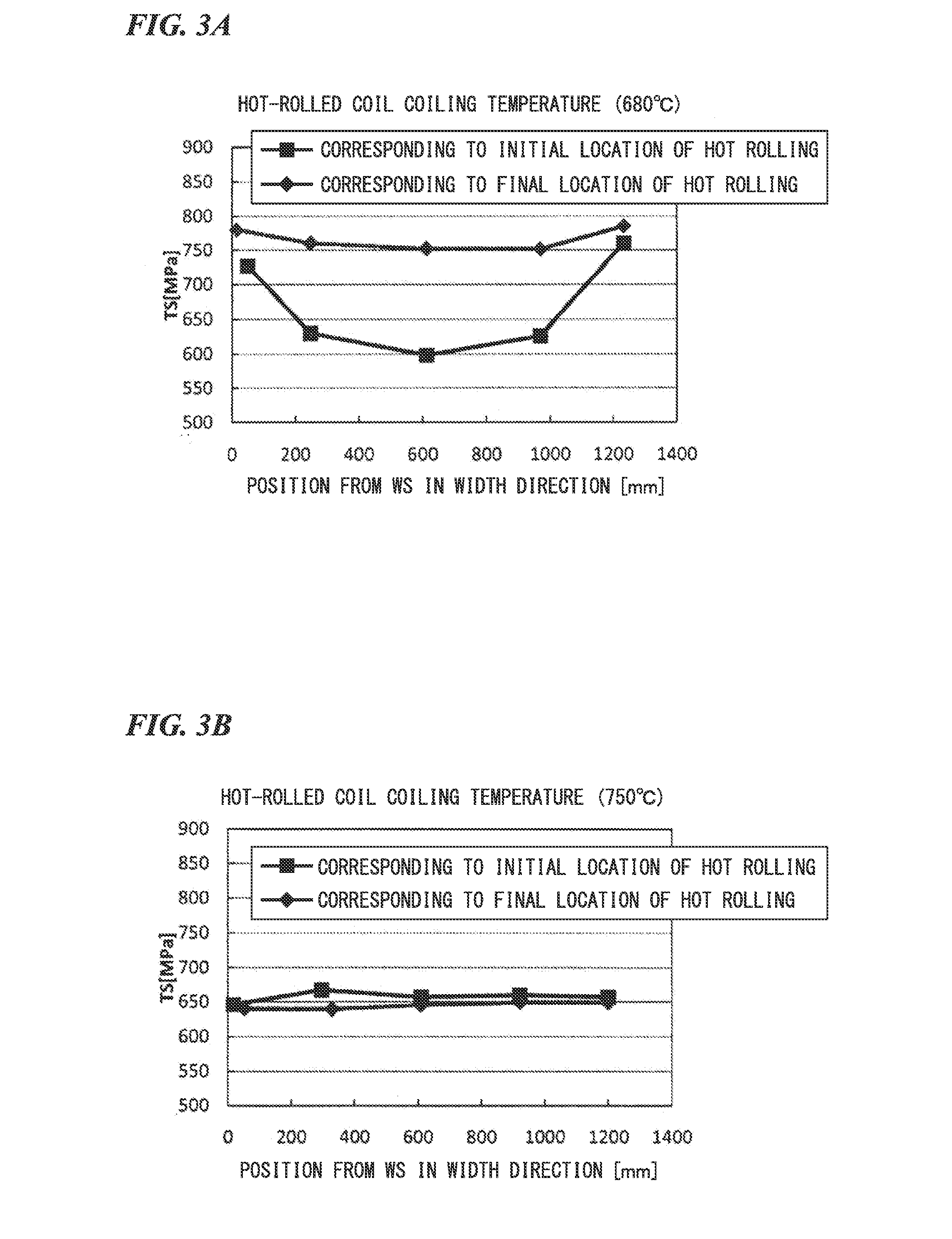Method for manufacturing hot stamped body and hot stamped body
a technology of hot-rolled body and hot-rolled body, which is applied in the direction of manufacturing tools, heat treatment equipment, furnaces, etc., can solve the problems of uneven microstructure of hot-rolled sheet after hot-rolling step, difficult to perform spheroidizing of carbide to realize softness and evenness of steel sheet, etc., and achieve the effect of stabilizing the hardness of the non-heated portion
- Summary
- Abstract
- Description
- Claims
- Application Information
AI Technical Summary
Benefits of technology
Problems solved by technology
Method used
Image
Examples
first embodiment
[0100]Hereinafter, a method for manufacturing a hot stamped steel sheet according to a first embodiment of the present invention will be described.
[0101]The method for manufacturing a hot stamped steel sheet according to the embodiment includes at least a hot-rolling step, a coiling step, a cold-rolling step, a continuous annealing step, and a hot stamping step. Hereinafter, each step will be described in detail.
[0102](Hot-Rolling Step)
[0103]In the hot-rolling step, a steel piece having the chemical components described above is heated (re-heated) to a temperature of equal to or higher than 1100° C., and the hot-rolling is performed. The steel piece may be a slab obtained immediately after being manufactured by a continuous casting installation, or may be manufactured using an electric furnace. By heating the steel piece to a temperature of equal to or higher than 1100° C., carbide-forming elements and carbon can be subjected to decomposition-dissolving sufficiently in the steel mat...
second embodiment
[0129]Hereinafter, a method for manufacturing a hot stamped steel sheet according to a second embodiment of the present invention will be described.
[0130]The method for manufacturing a hot stamped steel sheet according to the embodiment includes at least a hot-rolling step, a coiling step, a cold-rolling step, a continuous annealing step, and a hot stamping step. Hereinafter, each step will be described in detail.
[0131](Hot-Rolling Step)
[0132]In the hot-rolling step, a steel piece having the chemical components described above is heated (re-heated) to a temperature of equal to or higher than 1100° C., and the hot-rolling is performed. The steel piece may be a slab obtained immediately after being manufactured by a continuous casting installation, or may be manufactured using an electric furnace. By heating the steel piece to a temperature of equal to or higher than 1100° C., carbide-forming elements and carbon can be subjected to decomposition-dissolving sufficiently in the steel ma...
examples
[0163]Next, Examples of the present invention will be described.
TABLE 1CMnSiPSNAlTiBCrAc1Ac3DIinchSteel type(mass %)(° C.)(° C.)—A0.221.350.150.0090.0040.0030.0100.0200.00120.227358504.8B0.221.650.030.0090.0040.0040.0100.0100.00130.027258403.5C0.221.950.030.0080.0030.0030.0100.0120.00130.157258304.2D0.232.130.050.0100.0050.0040.0200.0150.00150.107208255.2E0.281.850.100.0080.0040.0030.0150.0800.00130.017258253.8F0.241.630.850.0090.0040.0030.0320.0200.00140.017408605.4G0.212.620.120.0080.0030.0030.0220.0150.00120.107258208.0H0.161.540.300.0080.0030.0030.0200.0120.00100.037358503.4I0.401.640.200.0090.0040.0040.0100.0200.00120.017308104.1J0.210.820.130.0070.0030.0030.0210.0200.00110.017358651.8K0.283.820.130.0080.0030.0040.0200.0100.00120.137107707.1L0.261.851.320.0080.0040.0030.0200.0120.00150.017558809.2M0.291.500.300.0080.0030.0041.3000.0200.00180.0173510554.6N0.241.300.030.0080.0040.0030.0200.3100.00120.207308504.1O0.221.800.040.0090.0050.0030.0100.0200.00010.107258302.2P0.231.600.0...
PUM
| Property | Measurement | Unit |
|---|---|---|
| temperature | aaaaa | aaaaa |
| temperature | aaaaa | aaaaa |
| temperature | aaaaa | aaaaa |
Abstract
Description
Claims
Application Information
 Login to View More
Login to View More - R&D
- Intellectual Property
- Life Sciences
- Materials
- Tech Scout
- Unparalleled Data Quality
- Higher Quality Content
- 60% Fewer Hallucinations
Browse by: Latest US Patents, China's latest patents, Technical Efficacy Thesaurus, Application Domain, Technology Topic, Popular Technical Reports.
© 2025 PatSnap. All rights reserved.Legal|Privacy policy|Modern Slavery Act Transparency Statement|Sitemap|About US| Contact US: help@patsnap.com



